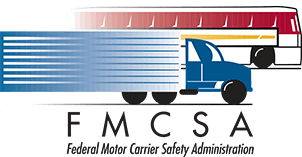Need Someone To Pack (Or Unpack) Your Small Items When Moving?
At A Wise Move, we provide a professional packing or unpacking service that will save your time and make your move a lot easier. When using our packing services, you will only pay our cost price for all materials used instead of retail price.
To keep your costs at a minimum we use an hourly rate system so we can pack everything, or only some things, according to your needs. It should be noted that where items are packed by our packers and are moved by A Wise Move Inc, then A Wise Move Inc Written No Damage Guarantee applies.
Should You Decide To Pack Yourself, Here Are Some Questions You May Have:
“What About Packing? What Do I Need? And How Long Will It Take?”
You can save a lot of money if you do the bulk of the packing on your own. We’ve prepared a general Packing Guideline, to help you plan the preparation for your move. Depending on the size of your home, you should start packing about 2 – 4 weeks prior to your move. Whatever you do – Don’t leave it to the last minute! You don’t want to rush when it comes to packing your belongings. Give yourself time to do it right.
“What Needs To Be Boxed? And Where Do I Get Boxes?”
All loose belongings need to be boxed. This even includes more challenging items like paintings, TV’s, electronics, and lamps. They all need to be protected.
You can purchase clean, new boxes from A Wise Move that are double-corrugated for extra strength and available in special sizes that make it much easier and safer to pack your belongings. We suggest that you call your relocation consultant to schedule a free delivery of your boxes and other packing materials. For prices and sizes, see our Packing Supplies section.
Before you start packing, it’s important to know how many boxes your move will require. This will help you budget your time and money. Use the chart below to help you estimate.
| Type of Dwelling: | No. of People: | No. of Boxes*: |
|---|---|---|
| Studio | 1 | 28 – 30 |
| 2 | 33 – 35 | |
| 1 Bedroom Apartment | 1 | 35 – 38 |
| 2 | 45 – 48 | |
| 2 Bedroom Apartment | 1 | 52 – 55 |
| 2 | 58 – 60 | |
| 2 adults, 1 child | 70 – 72 | |
| 2 adults, 2 children | 72 – 75 | |
| 3 Bedroom House/Apartment | 2 adults, 2 children | 100 – 102 |
| 4 Bedroom House & Up | 2 adults, 3 children | 120 – 125 & up |
*This estimate is based on standard, average moves. Depending upon individual lifestyle, the actual contents contained in any apartment can vary significantly from one household to another.
| Type of Dwelling: | No. of People: | No. of Boxes*: |
|---|---|---|
| Studio | 1 | 28 – 30 |
| 2 | 33 – 35 | |
| 1 Bedroom Apartment | 1 | 35 – 38 |
| 2 | 45 – 48 | |
| 2 Bedroom Apartment | 1 | 52 – 55 |
| 2 | 58 – 60 | |
| 2 adults, 1 child | 70 – 72 | |
| 2 adults, 2 children | 72 – 75 | |
| 3 Bedroom House/Apartment | 2 adults, 2 children | 100 – 102 |
| 4 Bedroom House & Up | 2 adults, 3 children | 120 – 125 & up |
*This estimate is based on standard, average moves. Depending upon individual lifestyle, the actual contents contained in any apartment can vary significantly from one household to another.
“What Other Materials Do I Need?”
It takes more than boxes to ensure the successful relocation of your belongings – unbroken, unscratched, undented. No matter how simple or complicated your move, it will be more successful with the following materials:
-
- Packing tape: The best tape for this purpose is plastic tape. It is not recommended to use masking tape for moving purposes. Buy good packing tape and a quality tape dispenser. Cheap tape may not hold the pressure, and poor dispenser will certainly spoil your packing mood.
- Packing paper: You are going to need plenty of wrapping paper, and for that matter old newspaper can be used. Keep in mind, however, that the ink on newsprint never thoroughly dries. Consequently, the goods you wrap in newspapers are most likely going to be soiled and will require cleaning after unpacking, and before you put them away. For items you prefer to keep clean it would be best to purchase some packing paper.
- Bubble wrap: Bubble wrap can be used to wrap very delicate, fragile items such as figurines. It is also very helpful to protect fragile surfaces such as mirrors, monitor and TV screens, fish tanks, etc.
For similar purposes you can use tissue wraps, foam sheets and Styrofoam peanuts. All those supplies can be purchased from packaging store. Visit our Packing Supplies section to learn about different online purchase options and prices.
- Blankets: All furniture should be wrapped in blankets, to protect it from tears and bumps during the move. This is job best left to the movers. They will provide heavy-duty blankets, specifically made for movers, free of charge.
- Labeling markers: Used to label the contents of cartons. It is smart to mark your boxes with additional information, such as “FRAGILE”, “THIS SIDE UP”, etc.
- Original packing: Whenever it is possible, it’s best to re-pack some special items using their original boxes and packing materials. This is especially important for electronic items, like stereos and computers.
- Miscellaneous: You can use some of your own items and materials to cushion your breakable objects. Use crumpled paper, blankets, pillows and clothing as a buffer between fragile items.
“So, How Do I Do This?”
You don’t need to be a professional packer – for most items. The right materials and a few tips can help you accomplish the packing portion of your move to go quickly, easily and properly. We also send an employee to assist you on how to pack and how to use the boxes for 1 hour with no additional charge. We have created a Guideline of Packing tips that will come in very useful.
Download pdf of printable packing tips/guideline.
“Is There Anything The Mover Shouldn’t Pack?”
Absolutely. Here’s a beginning list of things that should not be packed by your mover, even if you’re just moving across the street. If you give it a little thought, it all come downs to basic common sense.
You Should Not Have Your Mover Pack:
Especially valuable items: money, securities, valuable papers and jewelry
Flammable items: aerosol cans, paints, gasoline, etc.





